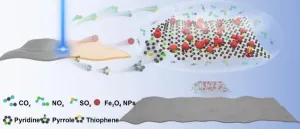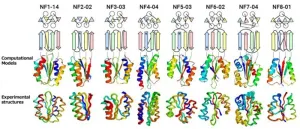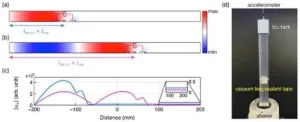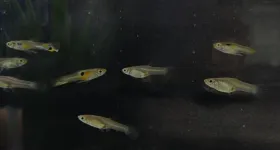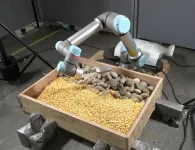(Press-News.org) Scientists from Chinese Academy of Sciences Ningbo Institute of Materials Technology and Engineering, National Physical Laboratory (UK), The University of Manchester (UK) and National University of Singapore have developed a new approach, published in International Journal of Extreme Manufacturing (IF: 14.7), to fabricate a specifically designed wideband microwave absorption metamaterial with well-controlled electrical and magnetic characteristics on a polyethylene terephthalate (PET) substrate using ultraviolet (UV) laser irradiation.
The process involves using a UV laser to precisely control the characteristics of 2-D pattern on a specially formulated donor material which upon interactions with the laser beam forms magnetic particle imbedded graphene, resulting in a highly functional ultra-wideband (1.56-18.3GHz) and wide angle microwave absorption metamaterial, which could potentially be applied in automatic and roll-to-roll mass production.
This research presents a one-step laser synthesis method that enables spontaneous conversion of PBI ink to 3D nanostructured graphene and the reduction of a liquid ion precursor to Fe3O4 magnetic nanoparticles. Moreover, Some of these resulting unique structural features exhibited superior absorption performance compared to most of the MMAs reported previously, and the process, carried out in ambient atmosphere, only requires donor coating and laser irradiation without the need for post-treatment.
“The precise sheet resistance control of laser induced graphene(LIG) with only 5% deviation was achieved by appropriate laser photoreaction and thermal reactions, rather than fixed crystal length of LIG with uncontrollable sheet resistance. Magnetic Fe3O4 nanoparticles were formed using a precisely controlled laser-induced photo-thermal reaction, rather than an oxidized nano-mixture.” said Dr. Yihe Huang, the first author of this article and Associate Researcher from Ningbo Institute of Industrial Technology (NIMTE), Chinese Academy of Sciences. “The laser-controlled fabrication process resulted in a flat surface laminate, with even distribution of magnetic and electric materials. As a result, the measured results of the microwave absorber closely matched the original design.”
“Through the employment of a sandwich structure, we have crafted advanced multilayer absorbers that match air impedance over the broadest possible operating frequency range, whilst upholding a small relative thickness. The first layer, featuring a softly contoured circular pattern, contributes to an extension in the operating frequency. The integration of circular and square patterns in the multilayer structure attains negative permittivity metamaterial properties, achieving a noteworthy perfect absorption (absorptivity of 99%) more than once within the operating frequency range.” said Mr. Yize Li, PhD Candidate at the University of Manchester.
The conductive laminates that were fabricated by laser technique show remarkably uniform sheet resistance distribution. The sheet resistance variation is nearly an order of magnitude less than that of screen or spray printing. This advantage helped the final performance of the laser fabricated microwave absorber match its original design. Dr. Kewen Pan, Associate Researcher at NIMTE said: “After suitable tuning, the microwave absorber achieved an average absorption coefficient in the range of 97.2% to 97.7% over a wide bandwidth and range of incident angles. Based on my literature search, this microwave absorber has the best bandwidth to thickness ratio ever reported.”
Professor Lin Li, Director of Laser Extreme Manufacturing at NIMTE and fellow of the Royal Academy of Engineering, commented: “This research has achieved a major breakthrough in the direct production of conformal microwave absorber on complex structures, which was made possible by the simultaneous formation and tuning of electrical and magnetic properties of laser patterned materials on flexible and curved substrates. With the highest relative bandwidth and lowest thickness materials till date, this method introduces a new avenue for the large-scale manufacturing of metamaterials for microwave absorption applications in aviation, electromagnetic interference (EMI) suppression, and 5G technology.”
About IJEM:
International Journal of Extreme Manufacturing (IF: 14.7, 1st in the Engineering, Manufacturing category in JCR 2023) is a new multidisciplinary, double-anonymous peer-reviewed and diamond open-access without article processing charge journal uniquely covering the areas related to extreme manufacturing. The journal is devoted to publishing original articles and reviews of the highest quality and impact in the areas related to extreme manufacturing, ranging from fundamentals to process, measurement and systems, as well as materials, structures and devices with extreme functionalities.
Visit our webpage, Like us on Facebook, and follow us on Twitter and LinkedIn.
END
Scientists developed 180% relative bandwidth microwave absorber by ultrafast UV laser
2023-07-12
ELSE PRESS RELEASES FROM THIS DATE:
Beyond nature's imagination: Scientists discover extensive array of protein folds unexplored in nature
2023-07-12
A groundbreaking study has shed new light on the astonishing diversity of protein structures and their folds in nature. Researchers set out to reveal the extent to which nature has explored the vast landscape of possible protein topologies. The results have unveiled an astounding array of unexplored protein folds, expanding our understanding and uncovering the depth of the protein universe.
This research has been published in the journal Nature Structural and Molecular Biology on July 3, 2023.
Proteins, ...
Bound states in the continuum is possible in the acoustoelastic coupling
2023-07-12
Let’s imagine a hypothetical scenario where two individuals are gripping a rope, each holding one end. Person A proceeds to shake the rope in an up-and-down motion, thus generating a propagating wave that travels towards person B. Now, if person C, positioned between person A and B, engages in a comparable frequency of waving motion as that of the rope’s wave, could the wave be redirected back to person A rather than reaching person B? Initially, this situation appears implausible, as person C does not physically ...
Pre-operative exercise substantially helps with recovery – study
2023-07-12
Policy-makers are being urged to take notice of a University of Otago study that confirms that undertaking a short programme of high intensity interval training before surgery can substantially help with recovery.
The study, published in the journal Surgery, reviewed and analysed 12 studies including 832 patients who had undertaken preoperative high-intensity interval training. Such training involves repeated aerobic high-intensity intervals at about 80 per cent of the maximum heart rate followed by active recovery.
Lead investigator Dr Kari Clifford says the study included all types of major surgeries – those expected ...
Scientists developing way to make cheaper Lithium batteries
2023-07-12
Lyon, France: Lithium is becoming the new gold, with rocketing use in lithium-ion batteries in electric cars, computers, and portable devices driving up the price and affecting the supply of the relatively rare metal. Scientists are on the verge of developing a way of using sodium to replace some of the lithium, so driving down costs and guaranteeing the supply.
Recently scientists have looked at dispensing with lithium altogether and instead using sodium or other elements in high quality batteries. Sodium is cheaper and more available (it’s found in seawater, as sodium chloride), but they have ...
Plant Biology 2023 plenary closeup: Connecting the dots
2023-07-12
This year’s Presidential Symposium places plant science within a larger context, spotlighting the connections between plants and humanity. Accordingly, ASPB President Gustavo MacIntosh selected speakers with a broad array of backgrounds and expertise. Yet when the Presidential Symposium takes place Saturday, August 5, at 1:30 pm, you’ll find they agree on critical fundamentals.
“Humans are totally dependent on plants for food,” began Barbara Schaal of Washington University.
“When it comes to agriculture, plants and people are really ...
Tiny fish surprise scientists in ‘volunteer’s dilemma’
2023-07-12
Tiny fish called Trinidadian guppies have surprised scientists when faced with the so-called “volunteer’s dilemma”.
The idea of the dilemma is that individuals are less likely to cooperate if they are in a large group.
Various studies have demonstrated this in humans – but guppies appear to buck the trend.
In the new study, by the University of Exeter, guppies in larger groups were more likely to risk approaching a predator to gather information for the shoal.
“When faced with a possible predator, guppies have to balance risks,” said Rebecca Padget, from Exeter’s Centre for Research in Animal Behaviour.
“At least one ...
Six research centers will lead innovation towards a fully sustainable energy sector
2023-07-12
An investment of £53 million in six research centres will drive forward change in the energy system and help to meet the UK’s net zero target by 2050.
The energy research centres will boost knowledge, create innovative green technologies and reduce demand for energy to achieve greener, cleaner domestic, industrial and transport energy systems.
UK Research and Innovation (UKRI) has awarded:
£15 million for a new Energy Demand Research Centre that will provide solutions for energy demand reduction, understand the impact on consumers, and enable equitable policy decision-making.
£17.5 ...
Training robots how to learn, make decisions on the fly
2023-07-12
Mars rovers have teams of human experts on Earth telling them what to do. But robots on lander missions to moons orbiting Saturn or Jupiter are too far away to receive timely commands from Earth. Researchers in the Departments of Aerospace Engineering and Computer Science at the University of Illinois Urbana-Champaign developed a novel learning-based method so robots on extraterrestrial bodies can make decisions on their own about where and how to scoop up terrain samples.
“Rather than simulating how to scoop every possible type of rock or granular material, ...
Substance use linked to long-lasting brain changes, cognitive decline
2023-07-12
An estimated 50 million individuals in the United States struggle with the challenges of cocaine or alcohol use disorders, according to the National Institutes of Health (NIH). Beyond the well-documented health risks, addiction to these substances detrimentally affects our cognitive flexibility, which is the ability to adapt and switch between different tasks or strategies. Although previous research has hinted at this connection, the underlying reasons for this cognitive impairment remain elusive.
Cognitive flexibility is a crucial element in various domains of our life, including ...
CU Anschutz study shows CBD use in pregnancy could impact the fetal brain
2023-07-12
AURORA, Colo. (July 11, 2023) – Researchers at the University of Colorado Anschutz Medical Campus have found that cannabidiol (CBD), often used to treat anxiety and nausea, can potentially harm a developing fetus.
The paper was published in Molecular Psychiatry today.
People consume cannabis or a non-psychoactive component cannabidiol (CBD) to help with nausea and anxiety during pregnancy because they think it is safe and healthy. But CBD crosses the placenta and accumulates in the fetal brain.
Until now, no one knew how fetal exposure to CBD affected brain development, said Emily ...
